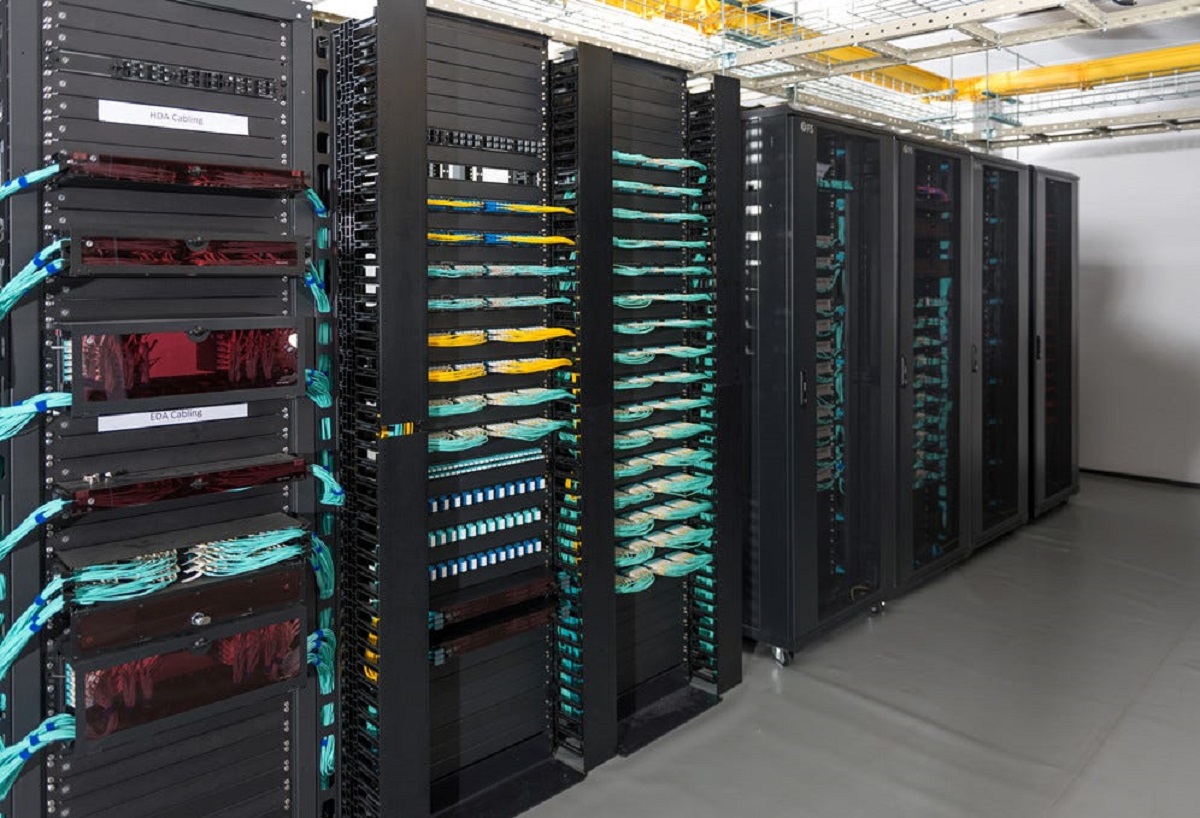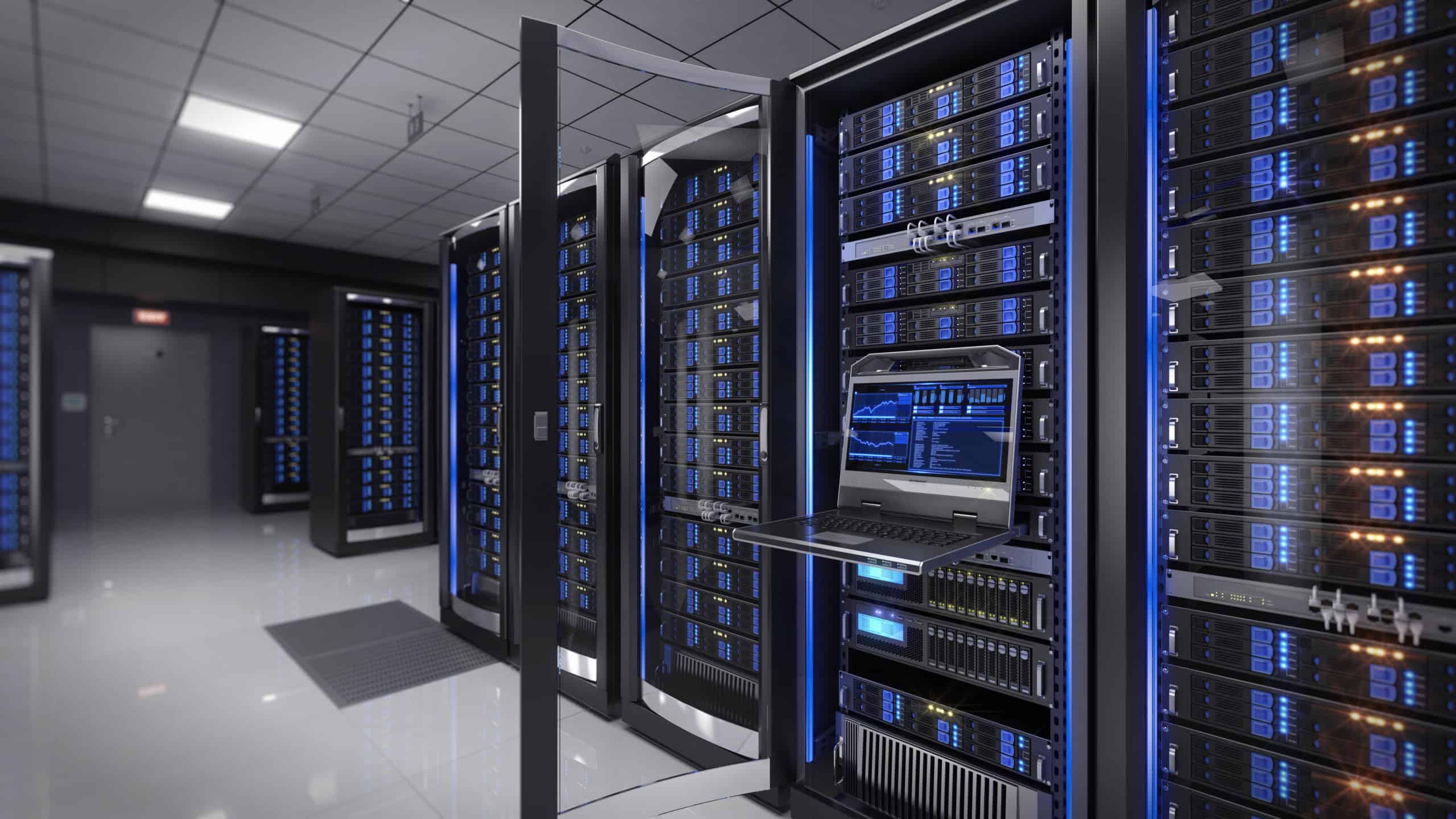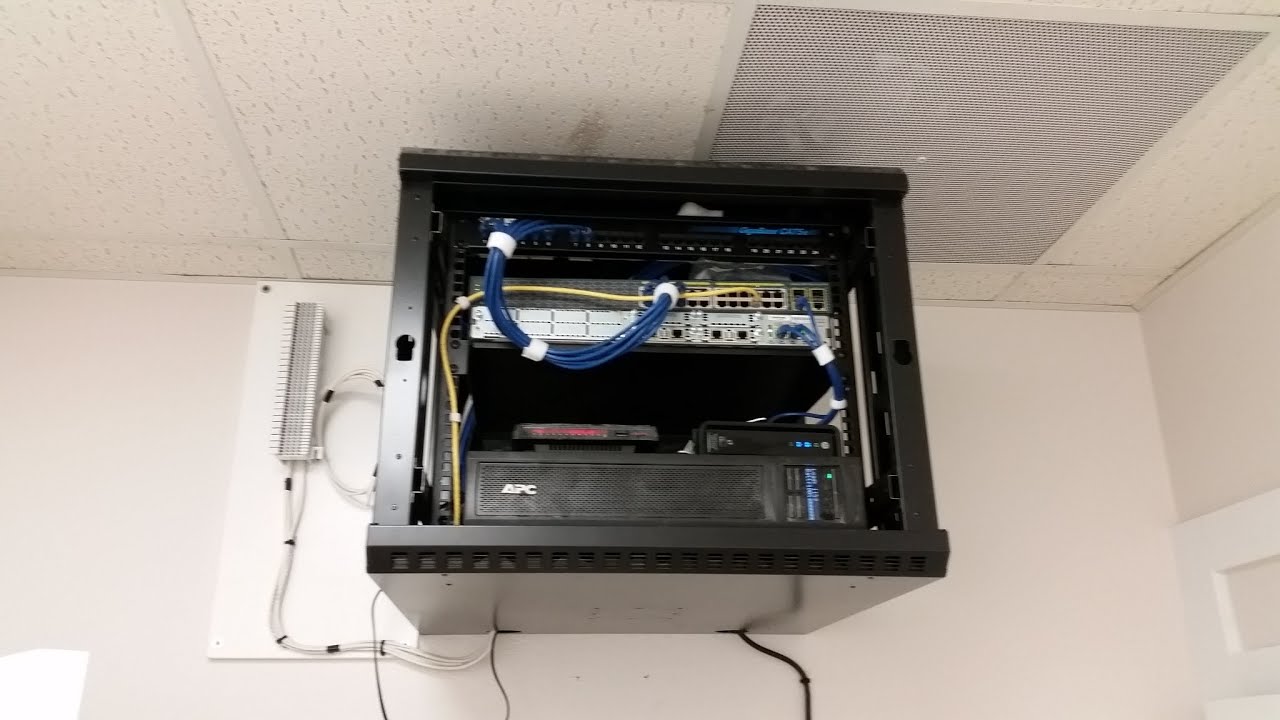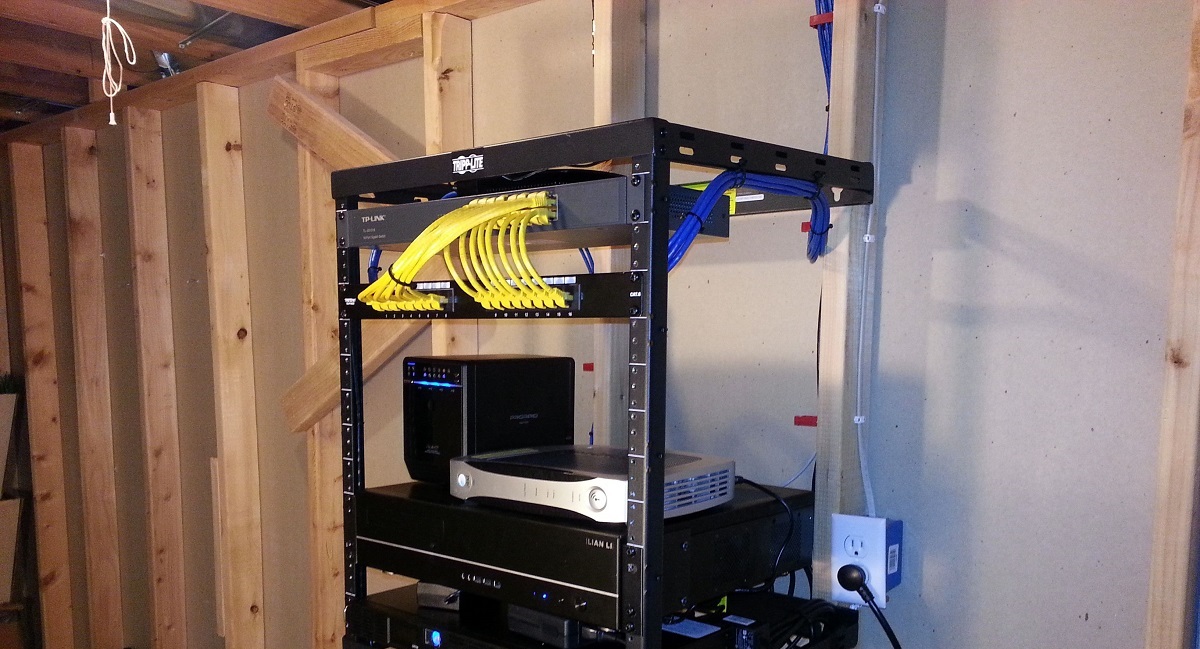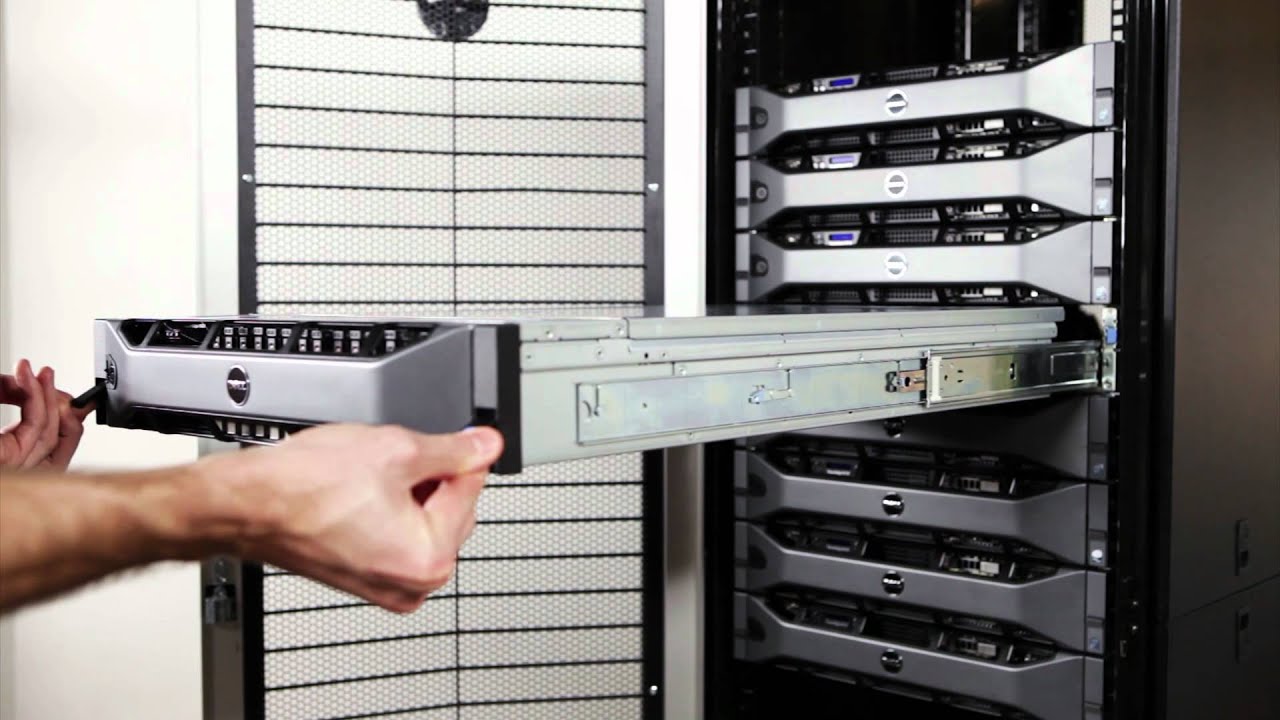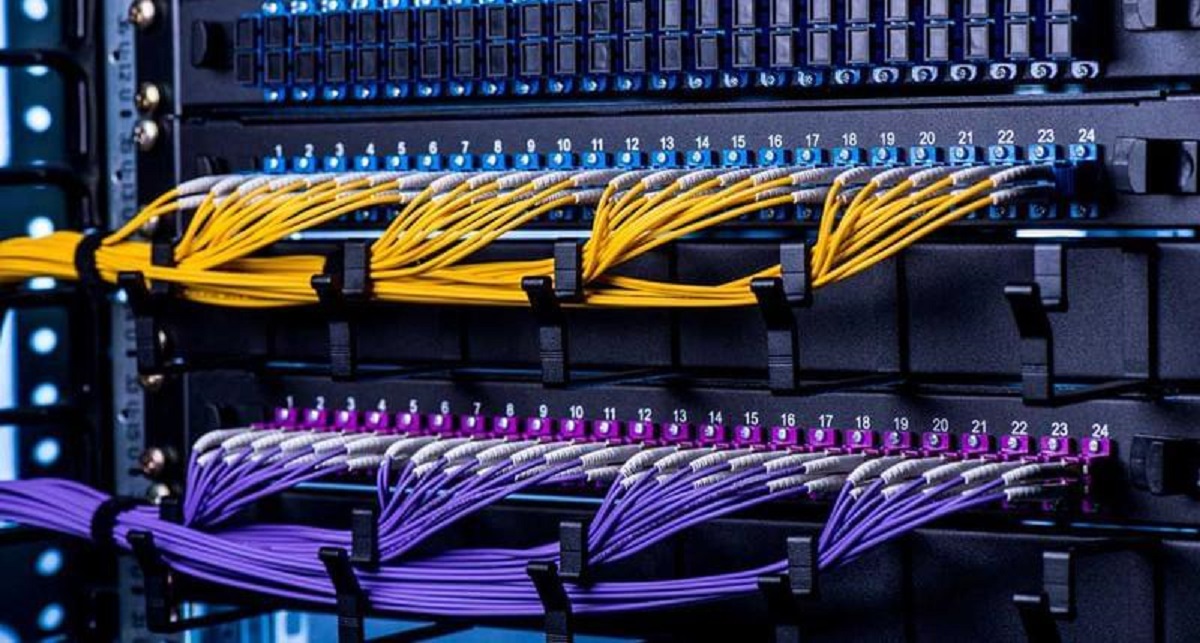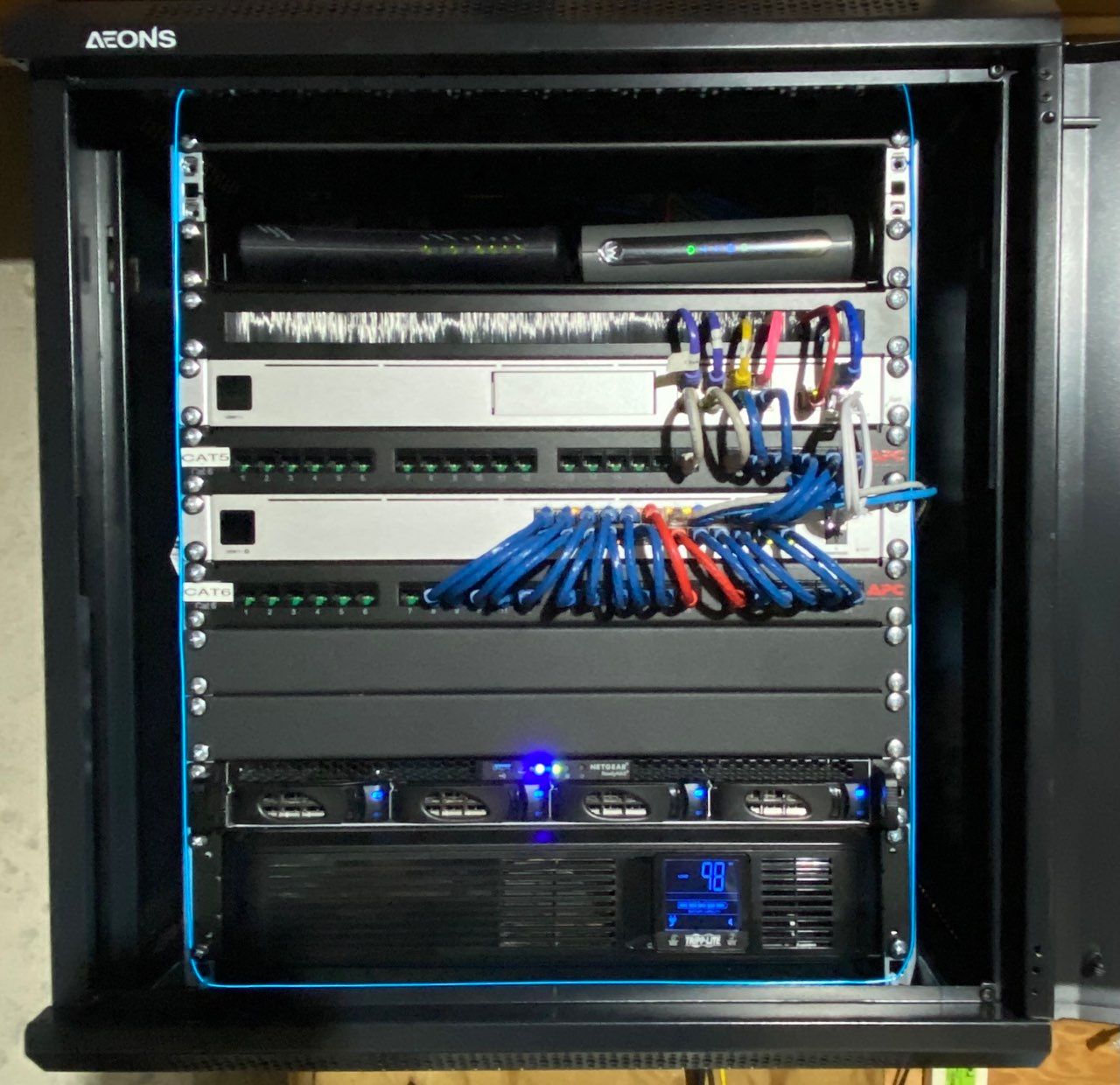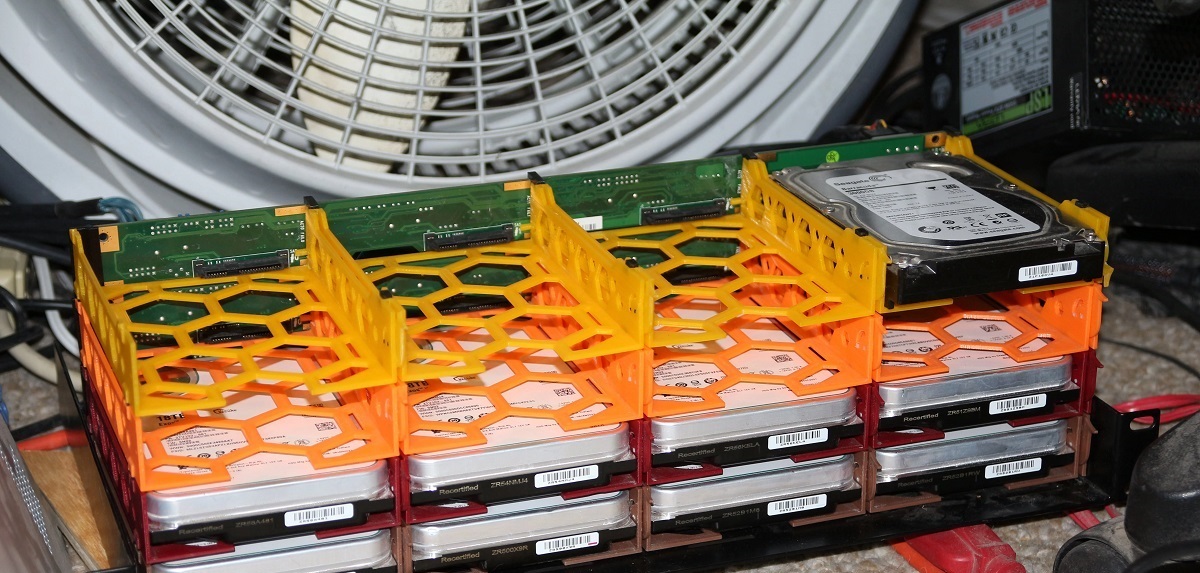Introduction
Welcome to the world of server racks, where power is the lifeblood that keeps everything running smoothly. Whether you’re a technology enthusiast or a business owner looking to set up a server room, understanding the power requirements for server racks is essential. This article will guide you through the ins and outs of power needs for server racks and provide useful information to help you make informed decisions.
Server racks are used to house and organize computer servers and other networking equipment. These racks serve as the backbone of modern IT infrastructure, providing storage, processing power, and connectivity for businesses of all sizes. However, all this functionality comes at a cost: power consumption.
Power requirements for server racks can vary significantly, depending on several factors. Understanding these factors is crucial in determining the right power supply and ensuring the proper functioning of your server room. In this article, we will delve into the various aspects that contribute to the power needs of server racks.
When it comes to power, servers require a stable and reliable source to operate without interruptions. Unexpected power outages or fluctuations can lead to data loss, system crashes, and significant downtime. By having a clear understanding of power requirements, you can implement the necessary measures to maintain an efficient and resilient server infrastructure.
Throughout this article, we will explore standard power specifications for server racks, calculate power loads, discuss redundancy considerations, and delve into power distribution units (PDUs) and power management solutions. Additionally, we will provide best practices for optimizing power efficiency in server racks.
Whether you’re setting up a small server room or a large data center, the insights and guidance provided in this article will empower you to make informed decisions about power requirements for your server racks. So, let’s dive in and shed light on the critical aspects of powering a server rack.
Understanding Power Requirements for Server Racks
When it comes to powering server racks, it’s important to have a clear understanding of the power requirements. The power demands of server racks can be influenced by several factors, including the number and type of servers, networking equipment, storage devices, and other peripherals.
The power requirements of server racks are typically measured in terms of voltage (V), current (A), and power rating (Wattage). These specifications determine the amount of electrical power that is needed to run the equipment smoothly.
One of the most critical considerations in understanding power requirements is the concept of power density. Power density refers to the amount of power consumed per unit of rack space. In other words, it measures how much power is drawn by the servers and equipment per square inch or square foot of rack space.
Modern servers are becoming more powerful and energy-efficient, allowing for higher computing density in smaller spaces. As a result, power density in server racks has been increasing over the years. It is essential to consider power density when designing your server room or data center to ensure that the power infrastructure can handle the load.
Another factor that affects power requirements is the type of servers and equipment being used. Different server models and configurations have varying power consumption levels. High-performance servers, for example, may require more power compared to standard servers.
In addition to the servers, networking equipment such as switches, routers, and firewalls also contribute to the overall power consumption. Storage devices, including SANs (Storage Area Networks) and NAS (Network Attached Storage) devices, can also add to the power requirements.
It’s important to consider future growth and scalability when determining power requirements. As your business expands, you may need to add more servers and equipment to your rack. Therefore, it is recommended to allocate some headroom and plan for potential power upgrades to accommodate future growth.
Understanding the power requirements for server racks is crucial for ensuring a stable and reliable infrastructure. By taking into account factors such as power density, server and equipment types, and future scalability, you can accurately calculate the power needs and make informed decisions when designing your server room or data center.
Factors Affecting Power Needs
Several factors can influence the power needs of server racks. By considering these factors, you can accurately assess the power requirements and ensure that your infrastructure can handle the workload.
1. Server Type and Configuration: The type and configuration of servers play a significant role in power consumption. High-performance servers generally require more power than standard servers. Additionally, factors such as CPU power, memory capacity, and storage options can impact power needs. It’s important to consider the specific requirements of the servers you plan to use in your rack.
2. Networking Equipment: Switches, routers, firewalls, and other networking equipment also contribute to power consumption. These devices enable network connectivity and require power to operate. It’s essential to factor in the power needs of networking equipment when calculating overall power requirements for your server rack.
3. Storage Devices: Storage devices, such as SANs and NAS devices, provide data storage capabilities. These devices consume power for operation, and their power needs should be considered when designing your server rack. The number and type of storage devices you plan to use will impact the overall power requirements.
4. Redundancy and Backup Systems: Building redundancy into your server rack is crucial for minimizing downtime and ensuring data integrity. Redundancy mechanisms, such as backup power supplies and uninterruptible power supplies (UPS), can add to the power needs. It’s essential to account for redundancy requirements when calculating power loads for your server rack.
5. Environmental Factors: The operating environment of your server rack influences power consumption. Factors such as temperature, humidity, and airflow affect the efficiency of the equipment. Poor ventilation or inefficient cooling can lead to higher power demands. It’s important to optimize the environmental conditions to minimize power consumption and ensure the longevity of your equipment.
6. Load Balancing: Proper load balancing across servers and equipment within the rack can optimize power utilization. Distributing the workload evenly can prevent overloading and minimize power wastage. By implementing load balancing techniques, you can ensure efficient power usage and maximize the performance of your server rack.
By considering these factors, you can accurately estimate the power needs for your server rack. It’s important to conduct a thorough assessment and consult with experts to ensure that your infrastructure can meet the power demands of your servers and equipment. This will help you build a reliable and efficient server rack that can support your business needs.
Standard Power Specs for Server Racks
When setting up a server rack, it’s essential to understand the standard power specifications to ensure compatibility with your equipment and infrastructure. These standard power specs govern the electrical requirements and outlets commonly used in server racks.
The most common voltage used in server racks is 110-120 volts AC (alternating current) in North America and 220-240 volts AC in other parts of the world. The choice of voltage depends on the region’s electrical standards and the power requirements of the equipment.
Power distribution in server racks is typically done using power distribution units (PDUs). PDUs are devices that distribute power from the main electrical source to the servers and equipment in the rack. There are two main types of PDUs: basic PDUs and intelligent PDUs.
Basic PDUs provide standard power delivery without any additional features or monitoring capabilities. They usually come with a range of outlets, such as NEMA (National Electrical Manufacturers Association) or IEC (International Electrotechnical Commission) outlets, to accommodate different types of plugs. Basic PDUs are suitable for simple server rack setups with minimal power management requirements.
Intelligent PDUs, on the other hand, offer advanced features like power monitoring, remote management, and environmental monitoring. These PDUs provide real-time data on power consumption, enabling better power management and capacity planning. Intelligent PDUs are ideal for more complex server racks or environments where remote monitoring and control are necessary.
In terms of power capacity, server racks commonly support various wattage ratings. The power capacity requirements depend on the number and type of servers and equipment in the rack. Power supplies for servers typically range from 300 to 1000 watts or more, depending on the server’s configuration.
When selecting a server rack, it’s essential to consider the power distribution requirements. Some racks come pre-installed with PDUs, while others may require separate installation. It’s important to ensure that the rack can accommodate the power capacity and configuration you need.
In addition to voltage and power capacity, it’s crucial to consider power redundancy in server racks. Redundancy ensures that power supply is uninterrupted even in the event of a power failure. Redundant power supplies, backup power sources, and uninterruptible power supplies (UPS) are commonly used to provide power redundancy in server racks. Redundancy is particularly important in critical environments where downtime can result in significant losses.
By understanding the standard power specifications for server racks, you can make informed decisions when selecting a rack, choosing the appropriate PDUs, and configuring the power infrastructure. This knowledge will ensure compatibility, efficiency, and reliability in your server rack setup.
Calculating Power Load for Your Server Rack
Accurately calculating the power load for your server rack is essential to ensure that your power infrastructure can handle the demands of your servers and equipment. By determining the power load, you can avoid overloading circuits, minimize downtime, and plan for future expansion. Here are the steps to calculate the power load for your server rack:
1. Identify Power Requirements of Each Component: Start by determining the power requirements of each server, networking equipment, storage devices, and other peripherals in your rack. Check the specifications or labels on the devices to find the power consumption information. Note down the wattage rating for each component.
2. Convert Power to Amps: Once you have the wattage information, convert it to amps by dividing the wattage by the voltage. For example, if you’re using 120 volts AC power, divide the wattage by 120 to get the amperage. This will give you the approximate power usage in amps for each component.
3. Calculate Total Amps: Add up the amperage values for all the components in your server rack to get the total amp usage. This will give you an estimate of the power load for your entire rack.
4. Account for Redundancy: If you have redundant power supplies or backup power sources, calculate the power load for these as well. Consider the maximum possible load in case of a power failure to ensure your backup systems can handle the load. Add the amperage values for redundancy to the total amp usage calculated in the previous step.
5. Plan for Headroom and Future Growth: It’s essential to allocate some headroom to account for any fluctuations or spikes in power usage. You may also want to plan for future growth by leaving some capacity for additional servers and equipment. Consider adding around 10-20% extra capacity to the calculated power load to accommodate potential increases in power demand.
Calculating the power load for your server rack gives you a clear understanding of the power requirements and helps you design a robust power infrastructure. It ensures that you have adequate power supply to support the workload and prevents overloading of circuits, which can lead to system failures and downtime.
Remember that power load calculations are estimates, and actual power usage may vary based on factors such as server utilization, workload, and environmental conditions. Regular monitoring and load balancing can help optimize power usage and prevent any unexpected power-related issues in your server rack.
Redundancy Considerations
When designing your server rack, one critical aspect to consider is redundancy. Redundancy ensures continuous operation and minimizes the risk of downtime due to power failures or other unforeseen events. By incorporating redundancy into your power infrastructure, you can enhance the reliability and resilience of your server rack. Here are some key considerations for implementing redundancy:
1. Redundant Power Supplies: Having redundant power supplies for your servers is the first line of defense against power interruptions. Most modern servers are equipped with dual power supply units (PSUs) that can operate independently. By connecting each PSU to a separate power source or circuit, you create a redundant setup. If one power supply fails or experiences an issue, the other can seamlessly take over, ensuring uninterrupted operation.
2. Backup Power Sources: In addition to redundant power supplies, having backup power sources is crucial for extended power outages. Uninterruptible power supplies (UPS), for example, provide battery backup to keep your servers and equipment running during temporary power losses. UPS units provide a smooth transition from the main power supply to battery power and buy you time to properly shut down or gracefully switch over to backup power sources.
3. Generator Backup: In scenarios where power outages can last for extended periods, having a generator backup is essential. A backup generator can provide continuous power supply during prolonged outages, ensuring uninterrupted operation of critical systems. It is advisable to have a generator that can handle the power demands of your server rack and other essential infrastructure components.
4. Automatic Transfer Switches (ATS): Automatic transfer switches are devices that automatically switch the power source from the main electrical supply to the backup power source, such as UPS or a generator. ATS units constantly monitor the main power supply and instantly transfer the load to the backup source in the event of a power failure. ATS units eliminate the need for manual intervention, ensuring seamless power switchover and maintaining uninterrupted operation.
5. Redundant Power Distribution Units (PDUs): Redundant PDUs provide an additional layer of redundancy within your power infrastructure. By having multiple PDUs, each connected to separate electrical circuits, you can distribute power load across different sources. If one PDU or power circuit fails, the other PDUs can continue providing power to the servers and equipment, minimizing downtime.
6. Maintenance Bypass Mechanism: When performing maintenance or repairs on your power infrastructure, it’s essential to have a bypass mechanism in place. A maintenance bypass allows you to bypass the power system without affecting the continuity of power supply to your servers and equipment. This ensures that maintenance activities can be performed without interrupting critical operations.
Implementing redundancy in your server rack is a proactive measure to mitigate the impact of power failures and other potential issues. Redundancy provides you with a safety net and peace of mind, knowing that your infrastructure is protected. However, it’s crucial to regularly test and maintain your redundancy systems to ensure they are functioning properly when needed.
Choosing the Right Power Distribution Unit (PDU)
The power distribution unit (PDU) is a critical component of your server rack infrastructure as it distributes power from the main electrical source to your servers and networking equipment. When choosing a PDU, there are several factors to consider to ensure it meets the power requirements and provides the necessary functionality for your setup.
1. Power Capacity: The power capacity of the PDU should align with the power needs of your server rack. Consider the total wattage rating of your servers, networking equipment, and other peripherals to determine the required power capacity. It’s advisable to choose a PDU with a power capacity higher than your current requirements to allow for future expansion.
2. Outlet Types: Different servers and equipment may have different plug types, such as NEMA or IEC outlets. Ensure that the PDU you choose has the appropriate outlet types to accommodate the plugs of your devices. This will prevent the need for adapters or additional cables.
3. Number of Outlets: Consider the number of power outlets required in your server rack to support your current equipment and potential future additions. Ensure that the PDU has enough outlets to adequately power all your devices and allow for scalability.
4. Mounting Options: PDUs are available in various mounting options, including vertical and horizontal mounting. Determine the most suitable mounting option based on the design and layout of your server rack. Consider factors such as available space, cable management, and accessibility when selecting the mounting style.
5. Monitoring and Management Features: Intelligent PDUs offer advanced monitoring and management capabilities, providing real-time power consumption data, remote access, and control options. These features can help optimize power usage, identify potential issues, and enable remote management of power distribution. Assess your needs and consider an intelligent PDU if remote monitoring and control are necessary.
6. Redundancy Support: If you require redundancy in your power infrastructure, ensure that the PDU supports redundant power sources. Look for features like dual power inputs and automatic failover that can seamlessly switch between power sources to maintain uninterrupted power supply.
7. Environmental Monitoring: Some PDUs offer environmental monitoring functions, including temperature and humidity sensors. These features can help you maintain the optimal operating conditions for your equipment. Consider environmental monitoring capabilities based on your specific requirements and the sensitivity of your servers and networking devices.
8. Quality and Reliability: Choose a PDU from a reputable manufacturer known for producing high-quality and reliable power distribution solutions. Read reviews, consult experts, and evaluate the reliability track record of the manufacturer to ensure long-term reliability and performance.
Choosing the right PDU is crucial in ensuring a reliable and efficient power distribution system for your server rack. By considering factors such as power capacity, outlet types, monitoring features, and redundancy support, you can select a PDU that aligns with your specific needs and provides the necessary functionality for your infrastructure.
Power Management and Monitoring Solutions
Power management and monitoring solutions play a crucial role in optimizing power usage, ensuring efficiency, and maintaining the reliability of your server rack. These solutions provide valuable insights into power consumption, enable remote monitoring and control, and help you make informed decisions to improve power efficiency. Here are some key solutions to consider:
1. Intelligent Power Distribution Units (PDUs): Intelligent PDUs offer advanced power management features, including real-time power monitoring, remote access, and control capabilities. They provide valuable data on power consumption, allowing you to identify trends, optimize energy usage, and plan for capacity growth. Additionally, remote access and control features enable you to manage power distribution and troubleshoot issues without physical access to the server rack.
2. Energy Management Software: Energy management software integrates with your power infrastructure to gather and analyze power consumption data. It provides comprehensive visibility into energy usage trends, identifies opportunities for optimization, and generates reports for informed decision-making. Energy management software can help you track the efficiency of your hardware, identify power-hungry devices, and implement energy-saving measures.
3. Environmental Monitoring Systems: Environmental monitoring systems provide real-time monitoring of temperature, humidity, airflow, and other environmental variables within your server rack. By keeping track of environmental conditions, you can proactively prevent overheating and optimize cooling, ensuring the longevity and reliability of your equipment. Environmental monitoring systems also help identify hotspots and ensure the proper functioning of cooling systems.
4. Power Usage Effectiveness (PUE) Monitoring: PUE is a metric used to measure the efficiency of your data center or server rack in terms of the total power it consumes versus the power consumed by IT equipment. PUE monitoring helps you assess the effectiveness of your power management strategies and identify areas for improvement. By optimizing PUE, you can reduce energy waste, improve cost-efficiency, and minimize the environmental impact of your server rack.
5. Outlet-level Metering and Control: Some advanced power distribution units offer outlet-level metering and control features. This allows you to monitor power usage of individual devices and control their power supply remotely. Outlet-level metering gives you insights into the power consumption of specific servers or equipment, enabling you to identify energy-hungry devices or optimize power usage in a granular manner.
6. Power Budgeting and Capacity Planning: Power management and monitoring solutions provide valuable data for power budgeting and capacity planning. By understanding power consumption trends, forecasting future growth, and considering business needs, you can accurately allocate power resources and plan for future expansions. This prevents overloading, allows for efficient power management, and ensures the scalability of your server rack.
Implementing power management and monitoring solutions enables you to proactively manage your power infrastructure, optimize energy usage, and enhance the reliability of your server rack. By leveraging these solutions, you can identify inefficiencies, adjust power distribution, and make data-driven decisions to achieve maximum performance and cost-effectiveness in your infrastructure.
Best Practices for Power Efficiency in Server Racks
Power efficiency is a key consideration for any server rack setup. Optimizing power usage not only reduces operating costs but also contributes to a more environmentally sustainable infrastructure. Implementing these best practices can help you improve power efficiency in your server rack:
1. Virtualization and Consolidation: Virtualization allows you to run multiple virtual servers on a single physical server, reducing the number of physical servers needed. This consolidation results in lower power consumption, as fewer servers are in use. It also leads to better resource utilization and increased efficiency.
2. Efficient Hardware Selection: Choose energy-efficient servers and networking equipment that have high-efficiency power supplies. Look for energy-efficient certifications, such as ENERGY STAR, to ensure that the equipment meets stringent energy efficiency standards. Additionally, consider replacing older, less efficient hardware with newer, more energy-efficient models.
3. Rack Layout and Airflow Management: Optimize the layout of your server rack to improve airflow and reduce hotspots. Ensure proper spacing between servers to promote better circulation of cool air. Use blanking panels and cable management solutions to maintain airflow and prevent recirculation of hot air. Implement a hot-aisle/cold-aisle arrangement and consider using containment systems to further improve cooling efficiency.
4. Temperature and Humidity Control: Keep the ambient temperature and humidity within the recommended range for your equipment. Maintaining optimal environmental conditions helps prevent unnecessary heat buildup and reduces the workload on cooling systems. Regularly monitor and adjust temperature and humidity levels to achieve the ideal operating conditions for your servers.
5. Power Management Features: Utilize the built-in power management features of your servers and networking equipment. Enable power-saving modes, such as sleep or hibernation, during periods of low activity. Implement power capping to set limits on power consumption, ensuring that the equipment operates within desired power parameters.
6. Implementing Dynamic Power Allocation: For virtualized environments, utilize dynamic power allocation techniques that allocate power based on the workload. This allows you to adjust power consumption based on demand, ensuring that resources are utilized efficiently. By dynamically allocating power, you can maximize the power efficiency of your server rack.
7. Regular Maintenance and Firmware Updates: Conduct regular maintenance to ensure optimal performance and power efficiency of your hardware. Clean servers, fans, and vents to remove dust and debris, which can impede airflow and increase power consumption. Regularly update firmware and software to take advantage of power-saving features and bug fixes provided by the manufacturer.
8. Power Monitoring and Analytics: Implement power monitoring and analytics solutions to keep track of power consumption trends and identify potential areas for optimization. Analyze power usage patterns to spot anomalies, identify power-hungry devices, and make informed decisions to improve overall power efficiency.
By following these best practices, you can significantly improve power efficiency in your server rack. Not only will you reduce operating costs and environmental impact, but you will also create a more reliable and sustainable infrastructure that contributes to the overall success of your organization.
Conclusion
Power requirements for server racks are a crucial consideration when designing and maintaining a reliable and efficient infrastructure. Understanding the factors that affect power needs, calculating power loads, and implementing redundancy measures are essential for uninterrupted operation and mitigating the risk of downtime.
Choosing the right power distribution unit (PDU) and implementing intelligent power management and monitoring solutions optimize power usage, improve energy efficiency, and provide valuable insights into power consumption trends.
To ensure power efficiency, it is important to follow best practices such as virtualization and consolidation, selecting energy-efficient hardware, optimizing rack layout and airflow, controlling temperature and humidity, utilizing power management features, implementing dynamic power allocation, conducting regular maintenance, and monitoring power consumption through analytics.
By implementing these practices and considering power efficiency throughout the design and maintenance processes, businesses can lower operating costs, reduce their carbon footprint, and create a more sustainable and reliable server rack infrastructure.
Power requirements for server racks will continue to evolve as technology progresses. Staying informed about the latest power-efficient hardware, monitoring solutions, and industry trends is crucial for staying ahead and maximizing the benefits of a power-efficient server rack setup.
In conclusion, prioritizing power efficiency not only benefits your business’s bottom line but also contributes to a greener and more sustainable future.







